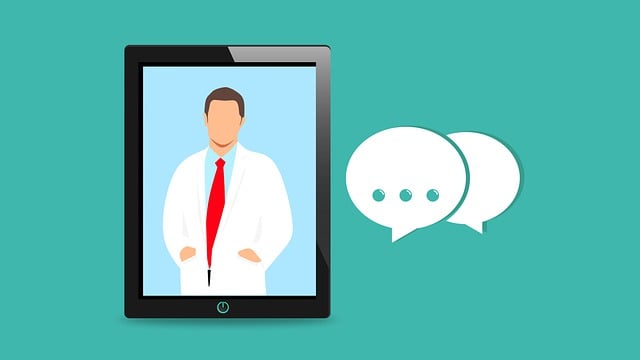Category: 24/7 Medical Answering Service
24/7 Medical Answering Service: Revolutionizing Healthcare Access and Support
Introduction
In the fast-paced, always-connected world of healthcare, ensuring continuous and efficient patient support is paramount. This is where a robust 24/7 (24-hour, 7-day) medical answering service steps into the spotlight, playing a pivotal role in bridging the gap between patients, healthcare providers, and critical medical assistance. This comprehensive article aims to explore every facet of this innovative service, from its foundational components to its global impact and future potential. By delving into its historical context, economic implications, technological innovations, regulatory frameworks, and real-world applications, we will uncover why 24/7 medical answering services are not just a trend but an indispensable component of modern healthcare systems.
Understanding 24/7 Medical Answering Service: A Comprehensive Definition
At its core, a 24/7 medical answering service is a specialized telephone and digital support system designed to provide immediate assistance and guidance to individuals seeking medical advice or emergency help. This service operates around the clock, ensuring that patients’ inquiries and critical health concerns are addressed promptly, regardless of the time zone or day of the week.
Key Components:
- Telephonic Support: Trained professionals answer incoming calls from patients, offering initial assessments, answering basic medical questions, and providing pre-hospital care advice.
- Digital Platforms: Online portals and mobile apps allow users to send messages, access medical records, and receive personalized recommendations.
- Emergency Response: In critical situations, the service can facilitate emergency services dispatch, ensuring swift action and potentially saving lives.
- Healthcare Provider Integration: Seamless integration with electronic health record (EHR) systems enables real-time data sharing, enhancing patient care coordination.
- Personalized Care Plans: Based on individual needs, customized care plans are created, including follow-up appointments, medication reminders, and health education.
Historical Context:
The concept of 24/7 medical support has evolved over the past few decades, driven by advancements in telecommunications and a growing recognition of the importance of timely healthcare access. In the early days, these services were primarily limited to telephone hotlines, offering basic medical advice and triaging calls to appropriate healthcare facilities. Over time, technological developments led to more sophisticated systems, incorporating digital platforms, mobile apps, and advanced data management tools.
Significance in Modern Healthcare:
- Improved Patient Access: It extends healthcare services beyond traditional clinic hours, making care more accessible to patients with diverse schedules.
- Reduced Emergency Room Burden: By providing initial assessments and guidance, it can decrease the number of non-urgent calls to emergency lines, allowing emergency responders to focus on critical cases.
- Enhanced Care Coordination: Integrated systems facilitate seamless communication between patients, caregivers, and healthcare providers, improving overall care management.
- Cost Efficiency: Offering preventive care advice and triaging minor cases can reduce unnecessary hospital visits and associated costs.
Global Impact and Trends:
The influence of 24/7 medical answering services is not limited to a single region; it has become a global phenomenon with varying implementations and outcomes.
Regional Variations:
- North America: The United States and Canada have seen significant adoption, often integrating these services into health insurance plans and public healthcare systems. Advanced technologies like AI-powered chatbots are gaining traction for their efficiency and cost savings.
- Europe: Many European countries have implemented national telemedicines programs, with varying degrees of success. The UK’s 111 non-emergency phone service is a well-known example, offering access to nurses and healthcare advisors.
- Asia: Emerging markets like India and China are witnessing rapid growth, driven by the large patient populations and increasing digital penetration. These services cater to both urban and rural areas, bridging healthcare accessibility gaps.
- Latin America and Africa: In these regions, non-profit organizations and government initiatives often partner with technology companies to provide basic telemedical services, improving healthcare reachability.
Key Trends Shaping the Future:
- AI Integration: Artificial Intelligence (AI) and Natural Language Processing (NLP) are revolutionizing call handling, enabling chatbots to manage routine inquiries, improve call center efficiency, and personalize patient interactions.
- Mobile Health (mHealth) Applications: The rise of smartphone apps offers patients convenient access to their health data, allowing them to monitor conditions, schedule appointments, and receive personalized recommendations.
- Remote Patient Monitoring: With the ability to track vital signs and patient activity remotely, this trend is especially beneficial for chronic disease management and elderly care.
- Data Analytics: Analyzing call volumes, patient demographics, and health trends provides valuable insights for healthcare policymakers and service providers, leading to more effective resource allocation.
Economic Considerations:
The 24/7 medical answering service market is a dynamic segment within the broader healthcare industry, presenting both opportunities and challenges from an economic perspective.
Market Dynamics:
- Global Market Size: According to a recent report by ResearchAndMarkets.com, the global telemedicine market (including 24/7 answering services) is projected to reach USD 419.6 billion by 2027, growing at a CAGR of 35.8%.
- Revenue Streams: Services are typically funded through health insurance plans, government initiatives, direct patient payments, or partnerships with healthcare providers and technology companies.
- Regional Market Analysis: North America dominates the market due to its advanced healthcare infrastructure and digital transformation. However, emerging markets in Asia and Latin America are expected to witness substantial growth due to rising healthcare spending and technological penetration.
Investment Patterns:
- Tech Companies: Major tech giants like Amazon (Amazon Health), Alphabet (Verily Life Sciences), and Apple (Apple Health) have invested heavily in telemedicine startups, bringing innovative technologies to the forefront.
- Venture Capital: Venture capital firms have shown a keen interest in digital health solutions, providing funding for research, development, and market expansion.
- Government Initiatives: Many countries are investing public funds to enhance telemedicine infrastructure, especially in rural areas, as part of their healthcare system modernization efforts.
Economic Impact:
- Cost Savings: By reducing hospital visits and improving patient adherence to treatment plans, these services can lead to significant cost savings for both patients and healthcare systems.
- Revenue Generation: For service providers, efficient call handling and increased patient engagement can boost revenue through subscription models, partnerships, and targeted advertising.
- Job Creation: The industry supports a diverse range of roles, from medical professionals to software developers, contributing to local economies.
Technological Advancements:
Technology plays a pivotal role in shaping the capabilities and effectiveness of 24/7 medical answering services, driving innovation and improving patient outcomes.
Significant Technologies:
- Artificial Intelligence (AI): AI algorithms enhance call routing, enabling more efficient handling of incoming calls. Chatbots powered by NLP can provide basic medical advice, reduce call volumes, and personalize patient interactions.
- Machine Learning: Predictive analytics powered by machine learning can anticipate patient needs, identify trends, and optimize resource allocation. It also aids in personalized treatment plans and risk assessment.
- Virtual Reality (VR) and Augmented Reality (AR): These technologies offer immersive healthcare experiences, particularly useful for medical training simulations and patient education.
- Internet of Medical Things (IoMT): Wearable devices and remote monitoring equipment collect real-time patient data, enabling proactive health management and early intervention.
Impact on Service Delivery:
- Improved Efficiency: AI-driven call routing reduces wait times and increases call handler productivity, ensuring faster response times for patients.
- Personalized Care: Advanced algorithms can analyze patient history and preferences to deliver customized recommendations, improving patient satisfaction and adherence.
- Enhanced Training: VR/AR simulations provide realistic training environments for medical professionals, allowing them to practice complex procedures without risk.
- Proactive Healthcare: IoMT enables continuous health monitoring, allowing healthcare providers to intervene early in chronic condition management.
Future Potential:
The future holds immense potential for technological advancements in this domain, including:
- 5G and Edge Computing: Improved network capabilities enable real-time data processing at the edge of the network, reducing latency and enhancing remote patient monitoring.
- Blockchain for Data Security: Secure data storage and sharing become more robust with blockchain technology, ensuring patient privacy and data integrity.
- Advanced Robotics: Robotic assistants could aid in basic medical procedures or provide social interaction for isolated patients.
Policy and Regulation:
The development and operation of 24/7 medical answering services are subject to various policies and regulations that ensure quality, safety, and ethical delivery of healthcare services.
Key Considerations:
- Licensing and Certification: Healthcare professionals involved in these services must adhere to local licensing requirements, ensuring they meet specific education, training, and experience standards.
- Data Privacy Laws: Strict data protection regulations, such as HIPAA (Health Insurance Portability and Accountability Act) in the US or GDPR (General Data Protection Regulation) in Europe, govern how patient information is handled and stored.
- Telemedicine Regulations: Many countries have specific laws governing telemedicine practices, including call routing, patient consent for remote consultations, and liability for remote diagnoses.
- Health Insurance Coverage: Policy coverage for telemedical services varies globally, with some insurance plans offering incentives or direct reimbursement for these services.
Regulatory Frameworks Across Regions:
- United States: The Centers for Medicare & Medicaid Services (CMS) has established guidelines for telemedicine, including requirements for patient consent and privacy protections. State laws may also have specific regulations.
- European Union: The EU’s eHealth Action Plan provides a framework for the development of safe and effective digital health solutions, with each member state implementing its own regulatory measures.
- Canada: The Canadian government has established telehealth standards, focusing on patient safety, security, and privacy. Provincial healthcare authorities oversee the implementation of these services.
- Australia: The Australian government’s eHealth Strategy supports the adoption of telemedicine, with regulations ensuring consumer protection and data security.
Challenges and Criticisms:
Despite its numerous benefits, the 24/7 medical answering service model faces several challenges and criticisms that require careful consideration and strategic solutions.
Main Issues:
- Patient Safety and Accuracy: Ensuring accurate diagnoses and appropriate treatment advice is critical. The potential for misdiagnosis or inappropriate recommendations through remote interactions raises concerns about patient safety.
- Data Security and Privacy: With sensitive health data at risk, securing information from cyberattacks and unauthorized access remains a significant challenge.
- Liability and Legal Issues: Determining liability in cases of medical negligence or malpractice can be complex when services operate across multiple jurisdictions.
- Digital Divide: The successful implementation of these services depends on reliable internet connectivity and digital literacy, which may not be universally available, especially in rural or underserved areas.
Strategies for Overcoming Challenges:
- Robust Quality Assurance Programs: Implementing rigorous training, ongoing performance monitoring, and regular audits can ensure the accuracy and reliability of medical advice.
- Advanced Data Security Measures: Employing encryption technologies, secure data storage solutions, and robust cybersecurity protocols is essential to protect patient information.
- Clear Legal Frameworks: Governments and healthcare regulators should collaborate to establish comprehensive legal guidelines addressing liability, consent, and data privacy for telemedical services.
- Bridging the Digital Divide: Initiatives aimed at improving digital infrastructure and literacy in underserved communities can enhance access to 24/7 medical answering services.
Case Studies: Real-World Success Stories
Examining successful implementations of 24/7 medical answering services provides valuable insights into their potential and the strategies employed for optimal results.
Case Study 1: Teladoc Health (USA)
Teladoc Health, a leading US telemedicine company, offers virtual doctor visits, mental health services, and chronic disease management programs. Their success lies in:
- Comprehensive Service Portfolio: They cater to various healthcare needs, from primary care to specialty consultations, ensuring broad patient reach.
- Technologically Advanced Platform: Teladoc’s proprietary platform uses AI for call routing, NLP for chatbot interactions, and secure data transmission protocols to ensure privacy.
- Partnerships with Insurers: Collaborations with major health insurance providers have expanded coverage for their services, increasing accessibility.
Case Study 2: 111 Service (UK)
The 111 non-emergency phone service in the UK is a well-integrated national telemedicine program. Key factors contributing to its success include:
- Public Awareness and Education: Comprehensive campaigns have raised awareness about the service, encouraging patients to use it appropriately.
- Multidisciplinary Teaming: Trained call handlers work alongside healthcare professionals from various specialties, ensuring comprehensive assessments.
- Integration with NHS Systems: Seamless integration with the National Health Service (NHS) electronic records allows for efficient data sharing and coordinated patient care.
Case Study 3: mHealth in India (Amitra (India))
Amitra, an Indian startup, provides a mobile health platform offering basic medical advice, medication reminders, and community-based support. Their success can be attributed to:
- Mobile Penetration: Leveraging high mobile phone usage in India, Amitra’s app-based service reaches a wide patient base.
- Community Engagement: The platform fosters a sense of community, encouraging users to share health experiences and tips, enhancing user retention.
- Partnerships with Local Clinics: Collaborations with local healthcare facilities ensure that patients can access physical medical care when needed, combining telemedicine with traditional services.
Future Prospects: Growth Areas and Emerging Trends
The future of 24/7 medical answering services is poised for further innovation and expansion, with several growth areas and emerging trends on the horizon.
Potential Growth Areas:
- Specialty Telemedicine: Expanding services beyond primary care to include specialty consultations in fields like cardiology, dermatology, and psychiatry can cater to diverse patient needs.
- Remote Monitoring for Elderly Care: With an aging global population, remote monitoring technologies can improve the quality of life for seniors, allowing them to age in place while receiving continuous care.
- Digital Mental Health Services: The integration of AI-driven therapy sessions, meditation apps, and mental health support groups can enhance access to psychological services.
- Global Market Expansion: Emerging markets in Asia, Africa, and Latin America present significant opportunities for service providers to offer much-needed healthcare solutions.
Emerging Trends:
- AI-Powered Diagnostics: Advanced AI algorithms can analyze medical images, patient data, and even genetic information to assist in diagnosing complex conditions.
- Virtual Reality for Training and Therapy: Immersive VR experiences will continue to revolutionize medical training and could be used for exposure therapy in mental health treatments.
- Blockchain for Secure Data Sharing: As data security concerns persist, blockchain technology offers a decentralized approach to secure and share patient information securely.
- Personalized Medicine: Using genomics and advanced analytics, 24/7 answering services can facilitate personalized treatment plans tailored to individual patient needs.
Conclusion:
The 24/7 medical answering service model represents a significant advancement in healthcare delivery, leveraging technology to bridge the gap between patients and medical professionals. With global market growth, technological innovations, and increasing public awareness, these services are set to play a pivotal role in shaping the future of healthcare. However, addressing challenges related to patient safety, data security, and accessibility remains crucial for ensuring the successful integration of this model into healthcare systems worldwide.
24/7 Call Support: Transforming Healthcare Accessibility
24/7 Emergency Call Centers: Revolutionizing Healthcare Access

An emergency call center is a vital resource in modern healthcare, offering 24/7 support to patients…….
24/7 Emergency Call Center: Revolutionizing Healthcare Access

24/7 emergency call centers for healthcare providers offer continuous patient support, addressing ur…….
Overnight Medical Receptionists: Revolutionize Patient Care & Satisfaction

In a demanding healthcare market, an overnight medical receptionist offers 24/7 patient support, tri…….
24/7 Care: Overnight Medical Receptionists for Continuous Patient Support

An overnight medical receptionist plays a vital role in healthcare settings by ensuring continuous p…….
After-hours Support: Enhance Patient Care Continuity 24/7

After-hours patient support is essential for consistent care, addressing queries outside clinic hour…….
Revolutionizing Care: 24/7 After-Hours Patient Support for Clinics

Implementing 24/7 after-hours patient support through dedicated call centers enhances trust and impr…….
Round-the-Clock Support: Transforming After-Hours Patient Care

In a fast-paced world, after-hours patient support through available call centers is transforming he…….


